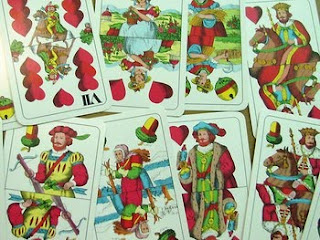I’ve seen crossword puzzles in Czech newspapers and magazines, but they look different than English ones. How do they work?
The most popular types of crosswords - known as Swedish crosswords - are essentially the same as the traditional American style with a few minor differences.
- The clues are not numbered, but instead written inside what would be the black squares. Some of these squares contain two clues: the upper one indicates across and the lower one down. The result is that the puzzle has very few black squares.
- Most puzzles contain a number of so-called hints (nápovědy). They are in fact simply a list of answers to some of the more difficult clues – usually ones drawn from foreign languages. The hints are usually in a small box in the lower right corner or along the left edge of the puzzle.
- The goal of the puzzles is not just filling in all of the blanks, but deciphering the hidden message (tajenka) which is typically a quotation strung across several entries. There are no specific clues for the spaces where the hidden message lies – only the words “first/second/third part of the hidden message” – and so one needs to fill in the crossing entries to figure it out. The author of the quotation and perhaps its first words are usually given at the top of the crossword. In many newspapers and magazines, the hidden message can be submitted and entered in a drawing for small prizes.
- Clues are almost always straightforward – i.e., no anagrams, puns, or other clever word games. For two-letter entries – another specificity of Czech puzzles – the clue is typically the initials of a famous person (e.g., “The initials of the tennis player Agassi”). One common standby is the clue SPZ followed by a city name – this refers to the license plate abbreviations (státní poznávací značka) that used to be connected with major cities and usually coincides with the first three letters of the city’s name. As in other countries, there are a number of clues that will leave ordinary Czechs befuddled but are familiar to diehard solvers – for example, “Latvian liquor” – XX.
- While many countries ignore diacritics (e.g., accent marks) in their crossword puzzles, Czechs, following their passion for spelling and grammar, require that the diacritics match when across and down entries intersect.





















